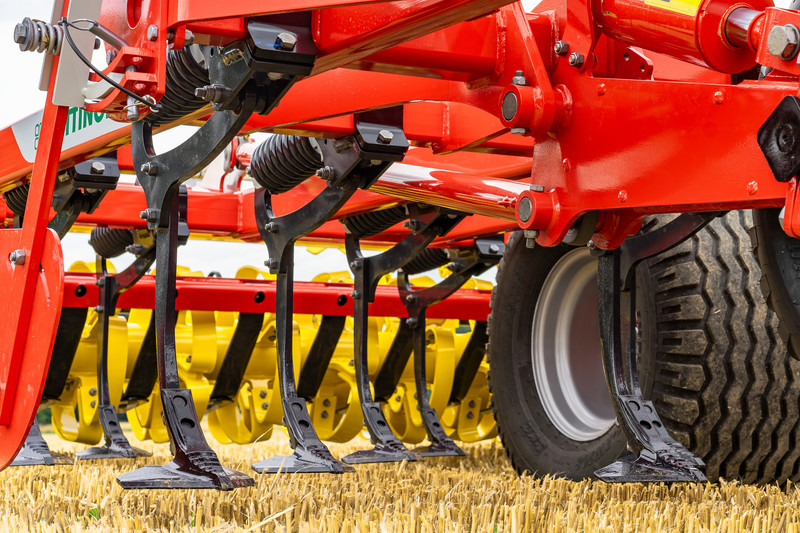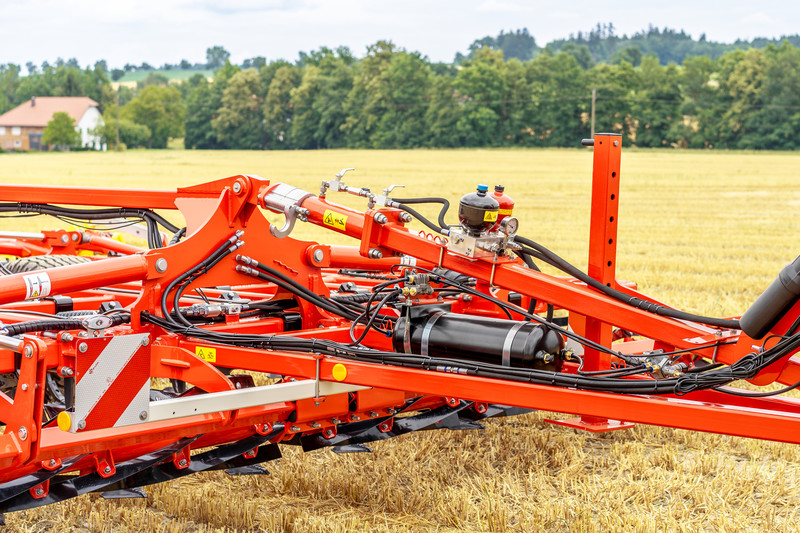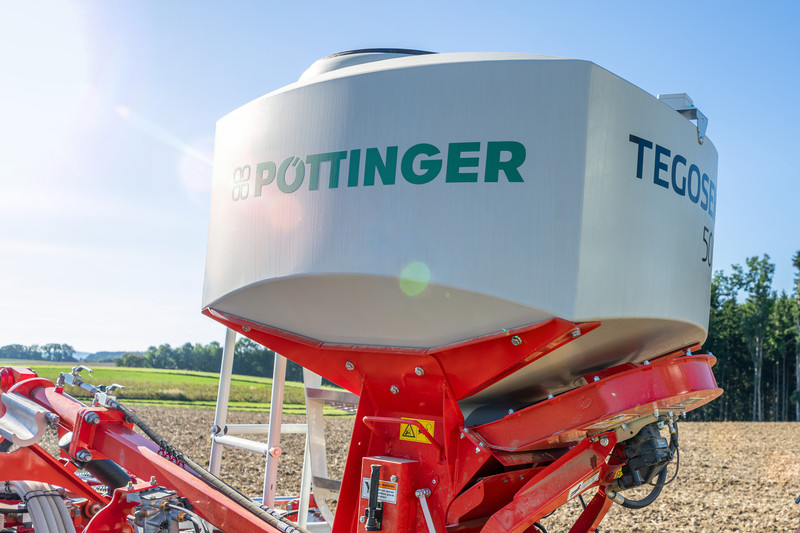Efficient and cost effective
×
Durability
When cultivating the soil, the tillage tools are subject to unavoidable wear. This depends on various factors. Factors that cannot be influenced are the soil type, the different grain size distributions, and the mineral composition of the soil. In addition, soil density and soil moisture play an important role. In terms of the ploughing process, the driving speed and the ploughing depth also affect the rate of wear of the wear parts.
Points and shares change their shape and geometry as they become more affected by wear, which can also influence the soil entry angle, the tillage effect and pulling power requirements. On PÖTTINGER tillage tools, tungsten carbide coatings guarantee the highest possible wear protection for more consistent work quality and a long service life.

Traction booster
As an option, the drawbar can be equipped with the TRACTION CONTROL hydraulic pulling power booster. This system transfers weight from the cultivator to the rear axle of the tractor. The pressure in the drawbar cylinder can be adapted for different working depths, and deactivated completely for very shallow work. The shift in weight of up to 1.1 kg increases traction and eliminates possible wheel slip while reducing fuel consumption. Ultimately, the system reduces operating costs and increases the efficiency of your machine. The integrated nitrogen accumulator provides the necessary ground tracking along the axis of the machine.
The drawbar is equipped with a variable hydraulic cylinder as standard that can be set to either floating or, by engaging swing clips, rigid. In rigid mode, the weight of the machine is transferred to the tractor rear axle. In floating mode, the stubble cultivator follows the contours of the field for perfect ground tracking.

Combining passes
Efficiency and the ability to combine passes is becoming more and more important due to increasingly shorter time frames for getting out into the field. With the flexible TEGOSEM hopper, cover crops and micro-granules can be distributed during tillage to save the number of passes.
While making it easier to stay on schedule for planting cover crops after harvest, it also has a number of agronomic advantages. By establishing ground cover rapidly and extensively, unproductive water evaporation is prevented. Likewise, excess nitrogen in the soil is absorbed by the plants and retained on site. Improving and stabilising the soil structure with organisms increases water infiltration while reducing the risk of erosion.